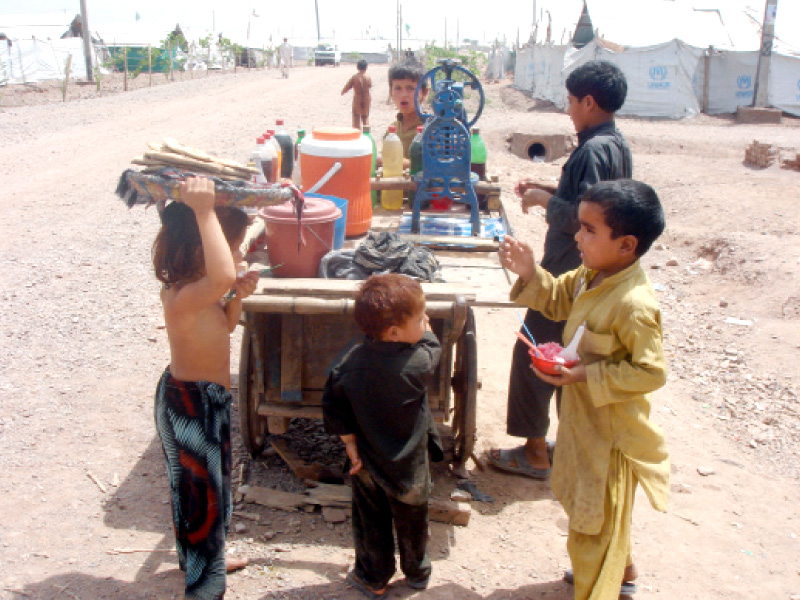
“Unfortunately, in today’s Pakistan, far too many children still die of preventable causes. Fewer girls than boys are in school. Despite long-standing recognition of an ongoing ‘nutrition emergency’, nutrition management is weak,” Unicef’s Representative Angela Kearney, stated in a report released on Monday.
1,185 infants died in K-P before their first birthday in first quarter of 2016
Kearney highlighted that no province had yet set up a comprehensive and coordinated system to identify and help children in need of protection, adding that expanding gains in sanitation and polio eradication would require sustained support.

Moreover, she said, Unicef managed to achieve significant results for children and women in the country with the support of the government and assistance of its donors.
The annual report highlights the key indicators in the areas of health, nutrition, sanitation, education and child protection.
Health
The report maintained that the number of children missed because of inaccessibility during anti-polio campaigns fell from 500,000 to 16,000 between 2013 and 2015. Similarly, wild polio virus cases plummeted from 306 in 2013 to 54 in 2015.
Around 72 per cent of locally-recruited health workers engaged by Unicef for community-based vaccination in high risk districts are women.
Water, sanitation and hygiene
In 2015, Pakistan achieved its MDG target of halving the proportion of the population without access to sanitation to 36 per cent.
As much as 91 per cent of the country’s population used improved sources of water, but in areas affected by natural disasters, water sources may be damaged.
A total of 1.3 million resided in ‘open-defecation free’ villages through Unicef support, 3,425 villages were certified free of ‘open defecation’, 579,0000 people were reached with safe drinking water.
Nutrition
Over 32 million children aged between six and 59 months received Vitamin A doses in 2015, the report highlighted. As many as 816,000 under-five children received micronutrient supplements.
Not a priority: Child protection bureau’s BoG hasn’t met since 2007
A total of 1.05 million mothers and 1.5 million children aged between six and 59 months were screened for malnutrition. At least 5,690 children suffering malnutrition were treated via the Outpatient Therapeutic Programme (OTP) while 90 per cent of the children suffering from acute malnutrition were cured through the programme.
“Pakistan is committed to ensure that there are no more preventable deaths of newborns and under-five children,” states Minister of State for National Health Services, Regulations and Coordination Saira Afzal Tarar in the report.
Education
Nearly a third of South Asian children who are out of school live in Pakistan. More girls are out of school: 38. 9 per cent at the primary level than 30.2 per cent of boys.
Recent enrolment drives decreased the number of primary school aged children who are out of school to 6.16 million in 2013-14, but there is insufficient data on whether these children actually remain in education.
Access to education is extremely inequitable. Only 20 per cent of girls from poor rural households are in school, compared to 81 per cent of those from rich urban households.
About 762,000 children were enrolled in primary school following community mobilisaiton through the Every Child in School Initiative.
Child protection
The report underscores that over 67,000 children accessed some form of protective services in 2015. Approximately 17,3000 families in cotton-growing areas with almost 70,600 children vulnerable to child labour received conditional transfers. Over 56,000 women and children were provided a safe place to live.
Published in The Express Tribune, August 27th, 2016.































1714024018-0/ModiLara-(1)1714024018-0-270x192.webp)









COMMENTS
Comments are moderated and generally will be posted if they are on-topic and not abusive.
For more information, please see our Comments FAQ